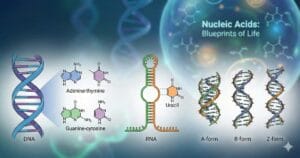
COMPETITIVE EXAM MCQs SERIES of ENVIRONMENTAL SCIENCE for UGC-NET/JRF, SLET, ARS, GATE, and other entrance tests – Energy and Environment – Biomass and Bioenergy.
Syllabus Outline
- Biomass resources and availability
- Types of Biomass and classification based on origin (e.g., agricultural, forestry, municipal waste)
- Characteristics and properties of different biomass feedstocks
- Thermochemical conversion (e.g., combustion, gasification, pyrolysis)
- Biochemical conversion (e.g., anaerobic digestion, fermentation)
- Integrated biorefinery concepts
- Production of biofuels (e.g., bioethanol, biodiesel) and biomass power generation
- Biogas production and utilization
- Environmental Impacts of Biomass Utilization
- Socio-Economic Aspects of Biomass and Bioenergy
This quiz contains the concept-based most frequently asked 25 MCQs of “Energy and Environment – Biomass and Bioenergy“. Each question has a single correct/most appropriate answer.
*****
1. Which microorganism is commonly used in the anaerobic digestion of biomass?
a) Yeast
b) Cyanobacteria
c) coli
d) Methanogens
2. Which environmental factor is most affected by biomass combustion for energy production?
a) Water quality
b) Biodiversity
c) Soil fertility
d) Air quality
3. What is the primary limitation of using algae for biofuel production on a large scale?
a) Limited geographic distribution
b) Vulnerability to disease
c) High water requirements
d) Low lipid content
4. What is the main product of the anaerobic digestion of biomass in the presence of methanogenic microorganisms?
a) Methanol
b) Biogas
c) Biodiesel
d) Ethanol
5. What is the term for breaking down biomass into simpler compounds by heat in the absence of oxygen?
a) Transesterification
b) Fermentation
c) Pyrolysis
d) Gasification
6. Which chemical reaction is primarily responsible for bioethanol production from biomass?
a) Fermentation
b) Esterification
c) Hydrolysis
d) Transesterification
7. Which factor is critical in determining the overall environmental sustainability of bioenergy production from biomass?
a) Energy conversion efficiency
b) Technological advancements
c) Feedstock availability
d) Carbon footprint of the entire lifecycle
8. Which type of biomass is primarily used for biogasoline and biojet fuel production?
a) Agricultural residues
b) Wood
c) Algae
d) Grasses
9. Which of the following factors affects the yield and quality of biochar produced from biomass pyrolysis?
a) Humidity
b) pH
c) Temperature
d) Pressure
10. Which of the following is a potential limitation of using agricultural residues for bioenergy production?
a) Soil degradation
b) Low energy content
c) Difficulties in harvesting
d) High water content
11. Which type of biomass is primarily used for biochar production to amend soil?
a) Agricultural residues
b) Grasses
c) Wood
d) Algae
12. What is the main advantage of using biomass for energy production?
a) Low cost
b) High energy density
c) Minimal environmental impact
d) Renewable resource
13. What is the target for blending ethanol in petrol by 2030 according to the National Policy on Biofuels-2018?
a) 10%
b) 50%
c) 20%
d) 5%
14. What is the main chemical component of plant biomass that contributes to its recalcitrance during enzymatic hydrolysis?
a) Pectin
b) Hemicellulose
c) Cellulose
d) Lignin
15. What is the potential impact of large-scale biomass harvesting on soil fertility?
a) Increases soil acidity, affecting crop growth
b) Enhances soil fertility through organic matter addition
c) Promotes soil compaction and salinization
d) Leads to soil erosion and nutrient depletion
16. Which factor primarily influences the composition of bio-oils obtained from the fast pyrolysis of biomass?
a) Pressure
b) Catalyst type
c) Temperature
d) Feedstock type
17. Which biomass conversion process yields biochar as a byproduct?
a) Anaerobic digestion
b) Fermentation
c) Pyrolysis
d) Transesterification
18. How does the cultivation of energy crops for bioenergy production impact biodiversity?
a) Enhances biodiversity through habitat creation
b) Promotes invasive species
c) Reduces biodiversity due to monoculture practices
d) No significant impact on biodiversity
19. How do electrogenic bacteria interact with anaerobic microorganisms in the context of biomass conversion?
a) They compete for substrate with microorganisms.
b) They inhibit the growth of microorganisms.
c) They generate electromotive potential to facilitate biomass conversion into biogas
d) They facilitate the transfer of electrons to microorganisms.
20. Which biomass feedstock has the highest energy content per unit mass?
a) Wood
b) Algae
c) Grasses
d) Agricultural residues
21. Assertion (A): Crop cultivation for bioenergy production can lead to land use change and habitat loss.
Reasoning (R): Energy crops such as maize and sugarcane are often grown on land previously used for food crops or natural habitats, resulting in environmental degradation and loss of biodiversity.
a) Both the A and R are true, and the R is a correct explanation of the A.
b) Both the A and R are true, but the R is not a correct explanation of the A.
c) The A is false, but the R is true.
d) The A is true, but the R is false.
22. Which chemical process involves the conversion of triglycerides present in biomass oils into biodiesel and glycerol?
a) Esterification
b) Fermentation
c) Transesterification
d) Hydrolysis
23. Which country is the largest producer of bioethanol from biomass?
a) China
b) India
c) Brazil
d) United States
24. Which of the following is NOT a potential biochar application?
a) Soil carbon sequestration
b) Water purification
c) Livestock feed additive
d) Air pollution control
25. Which initiative is launched by the Government of India to promote Compressed Biogas for transportation?
a) Sustainable Alternative Towards Affordable Transportation
b) National Biogas and Manure Management Programme
c) Pradhan Mantri-VAN Yojana
d) Waste to Energy Programme
*****
Previous: Nuclear Reactors and Environmental Harmony
Next: Environmental Implications of Energy Use
References
- Klass, Donald L. (2018) Biomass for Renewable Energy, Fuels, and Chemicals. 2nd edition.
- Singh, Jasbir, and Dandekar, Anshu. (2020) Bioenergy: Principles and Applications. 3rd edition.
- Baskar, Chinnappan. (2019) Biomass Conversion: The Interface of Biotechnology, Chemistry and Materials Science. 1st edition.

